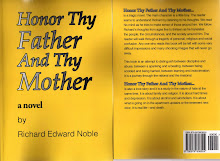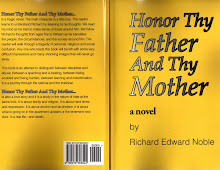
The Danbury Hatters Case 1908
"America on Strike"
By Richard E. Noble
Loewe and associates in Danbury, Connecticut manufactured hats. They refused to allow a union into their shop. The United Hatters Union instituted a boycott. The hatter’s union had branches in twenty one other states. A man by the name of Lawlor was the agent for the United Hatters of North America. The boycott went rather well. Loewe’s business was suffering. Instead of discussing the situation with the union, Loewe decided to file a suit against Mr. Lawlor and the Hatter’s Union. Loewe charged that the Hatter’s Union was in effect a monopoly and that it was acting illegally in combination conspiring to restrain interstate trade. The Sherman Anti-Trust Act of 1890 had supposedly banned trusts and monopolies from acting in such a way.
Businessmen felt that it was not only their legal right to conduct their businesses in any way that they saw fit, but that this was pretty much the law of nature and of God. The government had no right to interfere. The businessman’s right to hire and fire human beings was a part of the businessmen legal property rights. The fact that businesses were rapidly turning into monopolies and controlling everybody’s rights seemed to be of no consequence. Yet even though businessmen felt that they had the right to monopolize things, many citizens, workers, consumers and a few politicians thought otherwise. The result was the Sherman Anti-Trust Act. This Act was actually made into law by a Senator Hoar.
Many people were afraid of huge concentrations of wealth in the hands of a few. This was the situation throughout the United State at that time. A very few men owned and controlled most everything. The legislative intent of the law was to restrict, minimize and inhibit the spread of these few men and their business trusts and monopolies. After passage of the Bill twenty-five new trusts were formed in the next five years. No business trust or monopoly was ever brought up on charges of violating this law. Instead the law was shuffled and re-interpreted to undermine and shut down unions and the union movement. It was first used successfully in the Pullman strike against Eugene V. Debs. Debs went to prison. Now it was the Hatter’s turn.
The Hatter’s Union, it was determined by the United States Supreme Court, was without doubt a powerful organization. Its boycotting activities were most definitely restraining Mr. Loewe’s hat sales in several different states. For this reason it was decided that The United Hatters constituted an illegal combination which was acting in a way to restrain interstate trade and thus meet the terms and conditions specified in the Sherman Anti-Trust Act.
Not only was the Hatter’s Union ordered to stop its boycotting activities but Mr. Loewe and associates were awarded a cash settlement for the financial damages done to their business. The company had estimated its damages at around $74,000. The court decided to award them triple that amount. The Hatter’s Union was ordered to pay Loewe and associates $232,240.12.
In 1911 the case was brought before the Circuit Court of Appeals. The Hatter’s Union lost once again. In 1922 action was taken by the courts to levy upon the property of the individual members of the Hatter’s Union.
Good-bye Hatter’s Union. This decision now made it possible according to Samuel Gompers, for the business community in co-operation with the courts to dissolve any union in America.
Slowdowns were considered sabotage; walkouts were met with shutouts, close-outs and literal starvation. Talks and discussions via collective bargaining were considered by bosses to be intimidation and threat. Strikes were met with machine guns, club wielding strikebreakers, Pinkerton gangsters and criminals, followed by the State Militia and Federal troops. Economic stances such as boycotts were now considered acts in restraint of trade under the Sherman Anti-Trust Act and the Clayton Act that was to follow. What was left as a course of action for the workers living and working in recognized poverty, filth, and starvation? We shall see.
*Books used in this essay include: “Recent American History”, by Lester B. Shippee; “The American Pageant” A History of the Republic, by Thomas A, Bailey; “Labor Problems in American Industry” by Carroll R. Daugherty; “American Economic History” by H. U. Faulkner;” Summaries of Leading Cases on the Constitution” Paul C. Bartholomew, page 150.





































